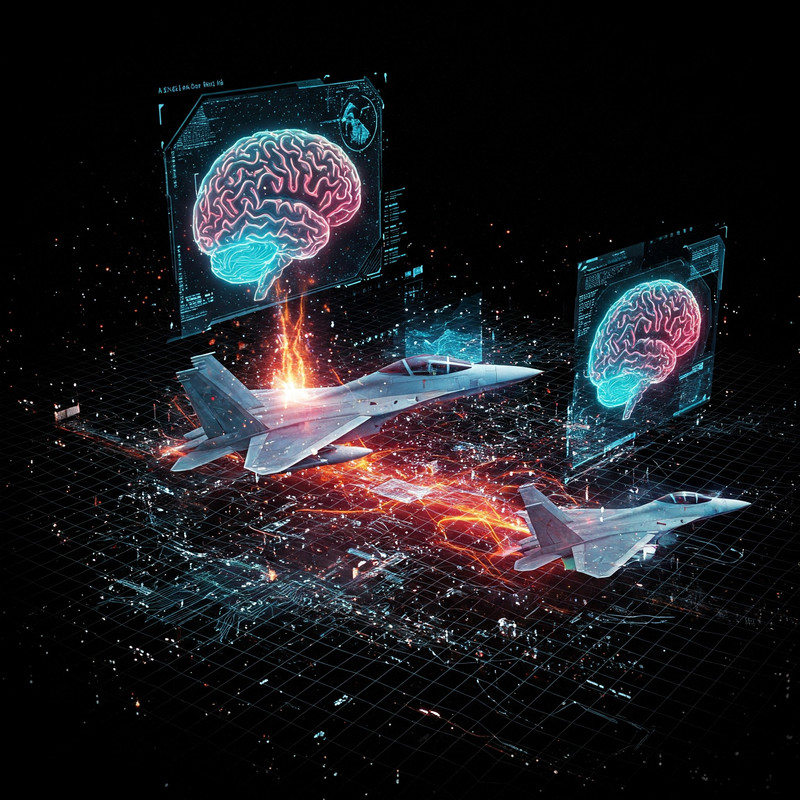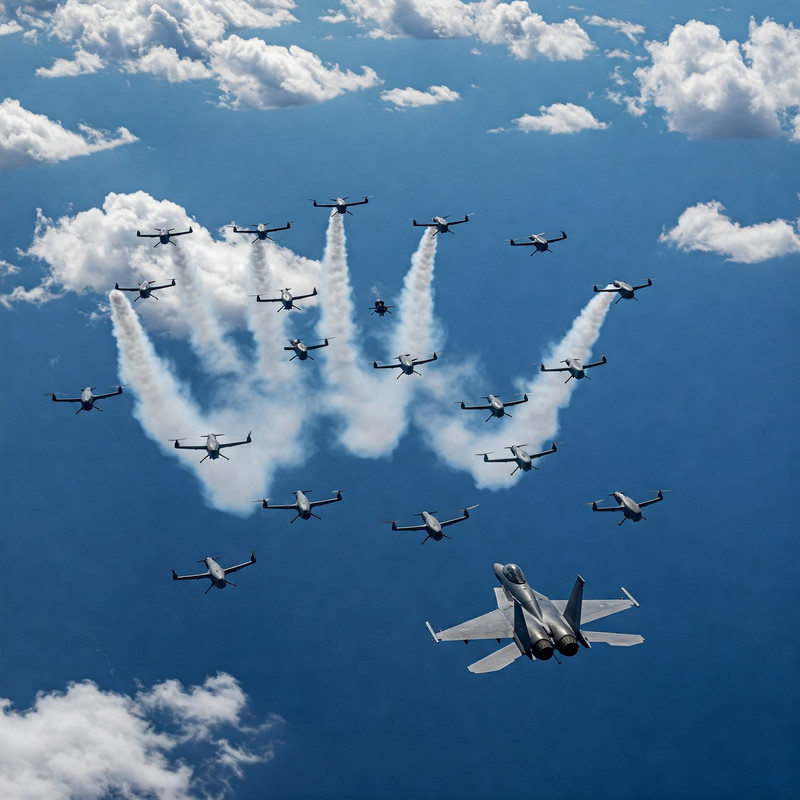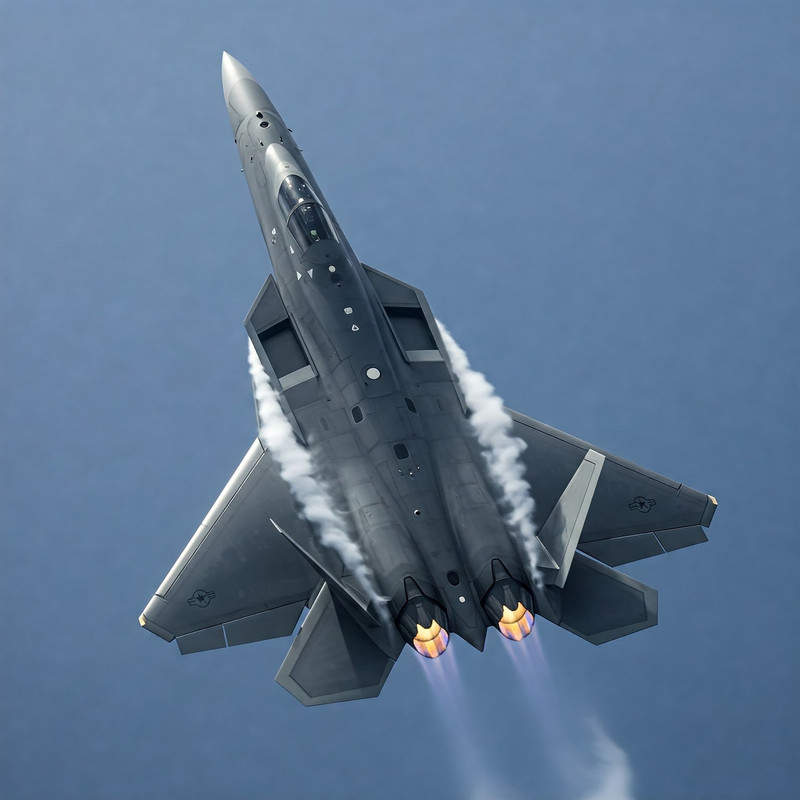Sixth-Generation Jets: How AI is Taking Over the Skies
Sixth-Generation AI Fighter Jets: The Future of Air Combat
Published on: May 21, 2025 | Written by Science by Rao

Image: A conceptual rendering of an AI-powered sixth-generation fighter jet.
Introduction: The landscape of military aviation is on the brink of a profound transformation. What was once the stuff of science fiction — autonomous aircraft making complex decisions in the heat of battle — is rapidly becoming a reality. The era of **sixth-generation fighter jets** is no longer a distant dream, but a cutting-edge development poised to redefine air combat. With Artificial Intelligence (AI) taking the helm, these revolutionary jets are designed to perform aerial maneuvers, engage enemy aircraft, and make tactical decisions with unprecedented speed and precision, often without a human pilot onboard. This article delves into the technological marvels that define these next-gen warplanes and what their emergence signifies for the future of warfare.
1. Defining Sixth-Generation Fighter Jets
While the fifth generation focused on stealth and sensor fusion, sixth-generation fighter jets represent a paradigm shift. They are not merely upgraded versions of their predecessors; they are fundamentally new platforms built around **AI and autonomous capabilities**.
- Optionally Manned or Fully Autonomous: A key characteristic is the flexibility to operate with or without a human pilot. This allows for diverse mission profiles, from high-risk penetration missions where a human presence is undesirable, to collaborative operations where a pilot may oversee a swarm of AI-controlled "loyal wingmen."
- Advanced Connectivity and Network-Centric Warfare: These jets are designed from the ground up to be integral nodes in a vast, interconnected battlefield network. They can seamlessly share data, coordinate attacks, and fuse sensor information with other manned aircraft, unmanned aerial vehicles (UAVs), ground forces, and naval assets in real-time.
- Cognitive AI and Adaptive Capabilities: Unlike programmed drones, sixth-gen jets will feature highly sophisticated AI that can learn, adapt, and make autonomous tactical decisions in dynamic and unpredictable combat scenarios, far beyond simple pre-programmed responses.

Image: Visual representation of autonomous combat jets operating in coordinated flight.
2. Key Technologies Powering the Future of Air Combat
The capabilities of sixth-generation jets stem from the integration of several bleeding-edge technologies:
- Artificial Intelligence-Driven Navigation and Targeting: AI algorithms will manage everything from flight control and complex mission planning to advanced target recognition and engagement, minimizing human cognitive load and reaction time.
- Enhanced Stealth Capabilities: Beyond traditional radar-absorbing materials, these jets will likely employ adaptive stealth features, potentially including plasma cloaking or intelligent surfaces that can dynamically alter their radar signature.
- Hypersonic Speed Engines: Capable of sustained flight at speeds exceeding Mach 5, hypersonic engines will allow these jets to cover vast distances rapidly, strike targets before conventional defenses can react, and escape pursuit.
- Directed Energy Weapons (Laser Systems): In addition to traditional armaments, future fighter jets are expected to carry directed energy weapons, offering silent, precision strikes with potentially infinite ammunition, capable of neutralizing missiles or damaging enemy aircraft.
- Advanced Sensor Fusion and ISR (Intelligence, Surveillance, Reconnaissance): AI will merge data from a multitude of on-board and off-board sensors, creating an unparalleled situational awareness picture that no human pilot could process alone.
3. Global Race: Who Is Leading the Development?
Several major global powers and defense coalitions are heavily investing in and leading the charge for sixth-generation air dominance:
- United States: The **NGAD (Next Generation Air Dominance)** program is the flagship effort, aiming to replace the F-22 Raptor and complement the F-35 Lightning II. It encompasses not just a new fighter jet but a "system of systems," including advanced drones and AI-powered command-and-control.
- United Kingdom: The **Tempest program** leads the UK's efforts, with partners like Italy, Sweden, and Japan. It envisions a highly adaptable, stealthy, and AI-driven combat aircraft designed for complex future air environments.
- European Coalitions: France, Germany, and Spain are collaborating on the **FCAS (Future Combat Air System)**, which also emphasizes networked operations, AI, and optional manning to create a comprehensive air combat ecosystem.
- Other Nations: Japan is also developing its own F-X fighter program, and China is known to be heavily investing in similar advanced aerospace technologies, indicating a global race to achieve sixth-generation capabilities.

Image: An artistic illustration depicting sixth-generation AI jets during a strategic mission.
4. Implications for Future Warfare and Ethical Considerations
The emergence of sixth-generation AI fighter jets will drastically alter the nature of future warfare:
- Reduced Human Risk: Autonomous operation allows for missions too dangerous for human pilots, saving lives and reducing the psychological toll of combat.
- Unprecedented Speed and Scale: AI-powered jets can react, execute, and coordinate far faster than human-piloted aircraft, potentially overwhelming adversaries with speed and synchronized attacks from swarms of drones.
- Shift in Emphasis: The focus will move from individual human piloting skills to the sophistication of machine learning algorithms, sensor fusion, and the ability to integrate diverse autonomous assets.
- Ethical and Regulatory Challenges: The development of highly autonomous lethal weapons systems (LAWS) raises profound ethical questions about accountability, decision-making without human empathy, and the potential for unintended escalation. International discussions are ongoing to establish norms and regulations for these technologies.
Conclusion: A New Era of Air Dominance
Sixth-generation AI fighter jets are not just an evolutionary step in military aviation; they represent a fundamental revolution in air combat. With their unmatched autonomy, profound intelligence, and integration of cutting-edge technologies, these aircraft are poised to redefine the speed, scope, and strategic dynamics of future warfare. While ethical considerations surrounding autonomous decision-making remain paramount, the technological prowess of these next-generation warplanes is undeniable, setting the stage for a new era of air dominance where AI takes the skies.
Stay updated with the latest in AI, aerospace, and defense technologies at sciencebyrao.blogspot.com.
Explore More Science by Rao:
- AI in Warfare: How Artificial Intelligence is Revolutionizing Modern Battlefields
- AI in Space Exploration: How Artificial Intelligence is Changing the Future of Space Missions
- The Moon as Earth’s Backup: Why Lunar Colonization Is Back in the Spotlight
- Terraforming Mars: Can We Turn the Red Planet Green?
- Time Travel in Physics: Science Fiction or Future Reality?
Follow and Connect with Science by Rao:
Stay updated by clicking the follow button on the sidebar!
Privacy Policy | Disclaimer | About the Author
Comments
Post a Comment